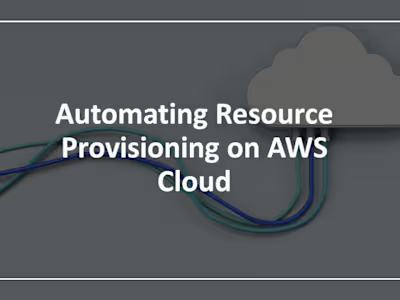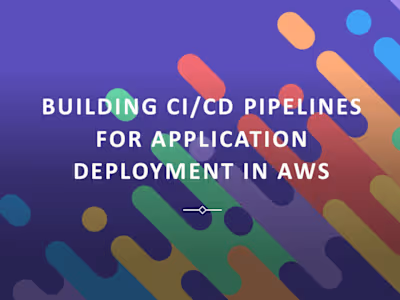Achieving Multi-Tenancy in AWS EKS
In the ever-evolving landscape of cloud computing, managing Kubernetes clusters efficiently is paramount. AWS EKS (Elastic Kubernetes Service) is a popular choice for orchestrating containerized applications on AWS infrastructure. However, when it comes to achieving multi-tenancy and optimizing performance, integrating Vcluster into your EKS cluster can be a game-changer.
Understanding the Benefits of Vcluster
Vcluster is a powerful tool that enables the creation of virtual clusters within an existing Kubernetes cluster. This concept is particularly beneficial for achieving multi-tenancy, where multiple teams or applications can coexist within the same Kubernetes environment without interfering with each other. Here are some key benefits of using Vcluster:
1. Isolation and Security:
Vcluster allows you to create isolated namespaces within the Kubernetes cluster, providing a higher level of security.
Each virtual cluster operates independently, preventing one tenant's activities from affecting another's.
2. Resource Efficiency:
Vcluster optimizes resource utilization by allowing the sharing of resources across multiple virtual clusters.
It enables efficient management of resources, preventing over-provisioning and reducing costs.
3. Simplified Management:
With Vcluster, you can manage multiple clusters using a single control plane, simplifying the overall cluster management process.
This streamlined approach enhances operational efficiency and reduces administrative overhead.
Utilizing Spot Instances for Cost Optimization
AWS provides spot instances, allowing users to leverage spare EC2 capacity at a significantly lower cost. Integrating spot instances with your EKS and Vcluster setup can lead to substantial cost savings. Here's how to utilize spot instances effectively:
1. Node Group Configuration:
Create node groups specifically for spot instances within your EKS cluster.
Adjust the desired capacity and maximum capacity to take advantage of spot instance pricing.
2. Spot Fleet Integration:
Consider using AWS Spot Fleet to diversify instance types and improve the chances of obtaining spot instances at a lower cost.
Spot Fleet can automatically replace interrupted instances, ensuring high availability.
3. Tolerant Workloads:
Deploy workloads that can tolerate interruptions on spot instances.
Leverage features like PodDisruptionBudgets in Kubernetes to manage workload disruptions gracefully.
Ensuring High Availability Inside EKS Cluster and Vcluster
High availability is crucial for mission-critical applications. Achieving this within an EKS cluster, especially when utilizing Vcluster for multi-tenancy, requires careful planning:
1. Multi-AZ Deployment:
Spread your EKS nodes across multiple Availability Zones (AZs) to ensure resilience against AZ failures.
Vcluster supports this multi-AZ architecture, providing high availability for virtual clusters.
2. Auto Scaling:
Configure Auto Scaling for your node groups to dynamically adjust the number of nodes based on demand.
Auto Scaling ensures that the cluster can handle varying workloads and maintain high availability.
3. Node Pools for Virtual Clusters:
Create separate node pools for different virtual clusters within EKS.
This approach enhances isolation and ensures that the failure of one virtual cluster does not impact others.
4. Regular Backups:
Implement regular backups of critical data and configurations.
In the event of a failure, quick recovery is possible by restoring from backups.
Setting Up AWS EKS Cluster with Vcluster using Terraform
Prerequisites
Before proceeding, ensure that you have the following prerequisites:
AWS CLI installed and configured.
Terraform installed.
kubectl installed.
AWS EKS and Vcluster binaries.
Terraform Configuration
Create a Terraform script (
main.tf) to define the AWS EKS cluster and Vcluster resources. The following is a simplified example:This Terraform script creates an EKS cluster and installs Vcluster after the EKS cluster is provisioned.
Utilizing Spot Instances
To leverage spot instances for cost savings, modify the
node_groups block in the Terraform script to include spot instances:This configuration specifies the use of spot instances for the EKS node group.
Achieving High Availability
For high availability within the EKS cluster and Vcluster, consider configuring multiple availability zones (AZs) and spreading your resources across them. Modify the
subnets block in the Terraform script to include subnets in different AZs:By distributing resources across multiple AZs, you enhance the resilience of your cluster against AZ-specific failures.
Conclusion
In this article, we've explored the process of creating a multi-tenant AWS EKS cluster with Vcluster using Terraform. We've discussed the benefits of using Vclusters, how to leverage spot instances for cost savings, and the importance of high availability within the EKS cluster and Vcluster. Implementing these best practices ensures a scalable, cost-effective, and resilient infrastructure for your Kubernetes workloads in the AWS cloud.
Like this project
Posted Dec 25, 2023
Deploying a Kubernetes cluster with multi-tenancy capabilities while utilizing IaC (Terraform)
Likes
0
Views
16






